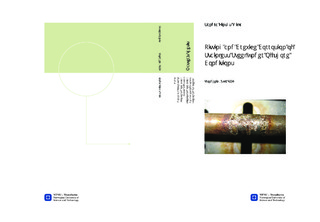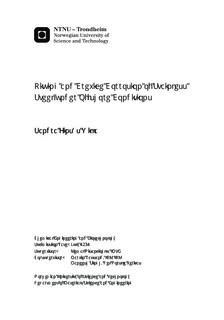| dc.description.abstract | AISI 316/316L has traditionally been used in offshore topside environments when operating under low temperatures. It has been observed that the AISI 316/316L piping suffer from severe attacks of pitting and crevice corrosion on external surfaces. It is therefore important to emphasise the comments within the statements that give the limitations on the use of the material. While temperature is the main parameter in the standards, there seem to be others, such as location, presence of tags and coating, which affect the initiation and propagation of pitting and crevice corrosion. This thesis discusses the various operating parameters that affect the susceptibility to pitting and crevice corrosion of AISI 316/316L piping and proposes procedures for identifying piping that are most prone to attack, and calculations of the probability of failure of such piping.In the first part of the thesis, a literature survey of the parameters that affect the pitting and crevice corrosion of AISI 316/316L in an offshore environment is presented. In the second part, a procedure for the identification of piping that is prone to pitting and crevice corrosion is presented. This procedure has been developed taking into consideration the parameters that are assumed to be important and suitable for use in RBI analysis. In the first step, the parameters that affect both pitting and crevice corrosion, that is, the chloride content due to the location of the pipe, coating and temperature, were considered to be the most important ones. In the second step, the possibility of crevice corrosion was assessed. In the third part, a procedure for assessing the possibility of pitting corrosion in the offshore topside environment based on the pitting potential was developed. The temperature of the external pipe surface was used to find the solubility of NaCl in water. The chloride concentration was used to determine the in order to find the possibility of pitting in the topside offshore environment. The last step was to develop a procedure for calculating the probability of failure of a pipe as a function of time. In this step, the functional life of the coating and the rate of pitting corrosion have been considered. | nb_NO |

